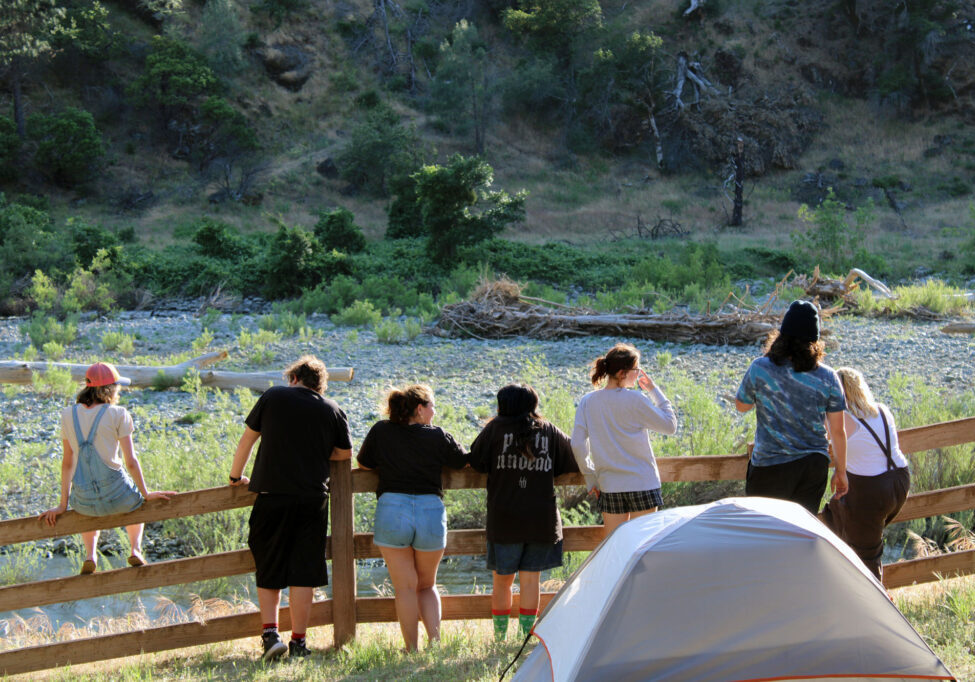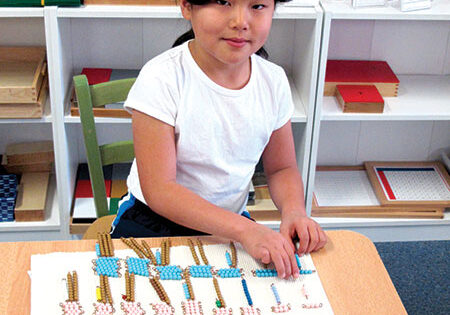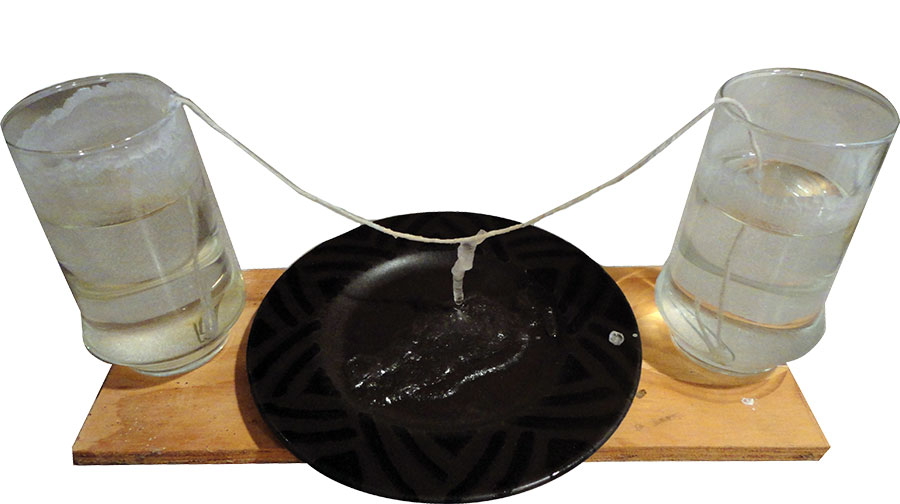Winter is upon us and with it some freezing weather. Well, that depends on where you are. Some kids rarely have a chance to see some snow or the iconic icicles. This month’s simple science experiment will have your child creating homemade icicles.
While it won’t be the actual way icicles form (the process more closely resembles how stalactites and stalagmites are created), it will create a wintery feel in your home, without the actual cold.
Materials for Homemade Icicles:
- 2 tall glasses
- 2 feet of cotton string (thicker than thread)
- 2 paper clips
- Water
- A plate
- Epsom salts or baking soda
- A deep bowl
Procedure:
- Pour about 1 cup of Epsom salts or baking soda into a bowl. Add about 2 cups of warm water and stir.
- As the materials dissolve, you should still see chunks floating in the water. If it all dissolves, add some more and stir it in.
- Tie the paper clips to either end of the string. Make sure this is a thick string (thicker than thread, but thinner than a shoelace).
- Put the string in the bowl of water and let it soak for an hour.
- Put 2 glasses about a foot apart with a small plate in between (I placed the items on a small piece of plywood in case I need to move the experiment.)
- After an hour, pour the water from the bowl into the two glasses. Hang the string between the two glasses with the paper clips inside the glasses (see photo). The string needs to hang between the glasses so its lowest point is below the water level in the glasses.
- If the Epsom salts or baking soda have completely dissolved in the water, add another spoonful now.
- Wait a few days to see your icicles form!
Explanation:
When you dissolve the solid in the water, it will flow with it, much. Much like when you put sugar or salt in water. We “saturated” the water in the bowl with Epsom salts or baking soda, meaning the water dissolved as much material as it could. We soaked the string in the liquid so that when we hung it across the two glasses, water would continue to flow up and through the string. The water carrying the dissolved material then dripped from the lowest part of the string, but left little bits of the solid behind. This built up over time and formed the icicle shape. On the plate, the solid material also collected into little mounds.
This is how stalactites and stalagmites form. Material inside rocks called “calcium carbonate” dissolves into water and then drips out of the ceiling of caves. The stalactites from the ceiling and stalagmites from on the ground as the material solidifies.
Experiment further:
Will other materials form solid “icicles?” Will sugar do the same thing? Think about other materials that dissolve in water that might work. My kids had the idea to color the water (they try to put food coloring in everything). Does that change the color of the substance? What if you put red on one side and blue on the other?
I hope you enjoyed this simple experiment!
Posted in: Art & Music, Community, Education
Comment Policy: All viewpoints are welcome, but comments should remain relevant. Personal attacks, profanity, and aggressive behavior are not allowed. No spam, advertising, or promoting of products/services. Please, only use your real name and limit the amount of links submitted in your comment.
You Might Also Like...

Homeschooling Can Build Confidence and Independence While Accelerating Learning
Imagine a world where you stay in your pajamas all day, finish your school assignments before lunchtime and every day is an out-of-school day. Welcome to my young life! After […]

Pitching Tents Far From Technology with Anderson New Technology High School
The name of Anderson New Technology High School (ANTHS) could lead you to imagine rooms filled with computers and kids fully immersed in alternative realities. ANTHS students do study core […]

One Mamapreneur’s Story Reflects A National Trend
“I wasn’t doing this for others – I was starting a business for me and my family.” As the director of Jefferson Economic Development Institute (JEDI), I hear this often. A […]

Supporting Children with Type 1 Diabetes: Local Group Helps Families Connect
The Northern California Type 1 Diabetes Support Group has been serving families since 2009. The group works to help network and support families who face the challenges of having a […]
A Creative Contribution – How Two Moms Are Helping Their Local School
The “Team J Moms” Facebook page says its purpose is “…to ensure our children receive the education they deserve.” The super duo who started the page, Jenelle Walker and Jasmine […]


The Montessori Method: An Approach To Educating The Whole Child
What do Anne Frank, Julia Child, Prince William of England, Jeff Bezos (founder of Amazon.com), and rapper Sean “P. Diddy” Combs have in common? Although vastly different in their life […]


